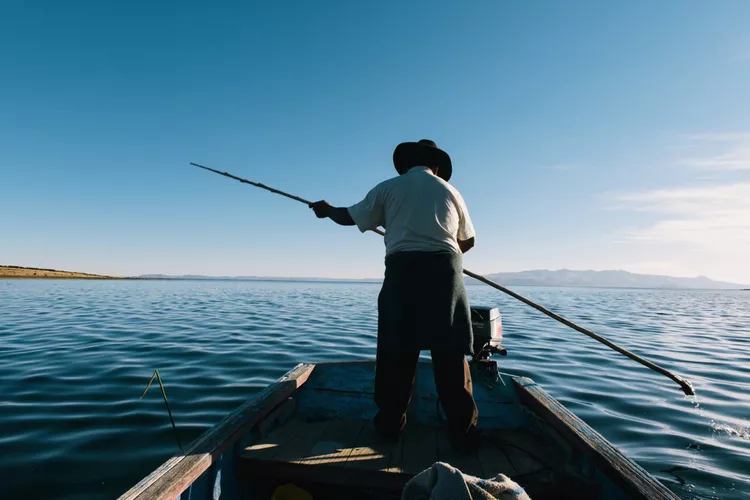Summary of Lake Titicaca
Lake Titicaca is a stunning and inspiring place, a windswept, high-altitude body of water surrounded by the impressive landscapes of the Peruvian Altiplano (Andean Plateau). Many visitors feel a spiritual connection here, or a palpable sense of the wonder of nature, a feeling that transcends their physical surroundings. Here, we will explore some of the most interesting facts about Lake Titicaca: the largest freshwater lake in South America and the highest navigable lake in the world.
Lake Titicaca in Numbers
- Surface area: 3,200 square miles (8,300 square km). For comparison, Lake Ontario has a surface area of 7,340 square miles.
- Length: The lake stretches from the northwest to the southeast for about 120 miles (190 km).
- Width: At its widest point, the lake measures about 50 miles (80 km).
- Average depth: 107 meters.
- Maximum depth: 920 feet (280 meters), with some sources suggesting it may be closer to 997 feet (304 meters).
- Altitude: With a surface elevation of 12,507 feet (3,812 meters) above sea level, it is higher than Cusco but lower than the highest point on the Inca Trail (13,780 feet).
- Catchment area: Lake Titicaca has a catchment area of 21,726 square miles (56,270 km²), comparable to the total area of West Virginia and about the same size as Croatia.
- Number of tributaries: Between 25 to 27 rivers normally flow into Lake Titicaca, though some may decline due to environmental changes.
- Number of outflows: One: the Desaguadero River, where the lake primarily loses water through evaporation.
- Coordinates: 15°45′S 69°25′W, roughly centered in the lake.
Lake Titicaca: Past and Present
- Age: Lake Titicaca is estimated to be approximately three million years old, making it one of the oldest lakes on Earth, according to UNESCO.
- First human inhabitants: The shores and islands have been inhabited since ancient times, with notable societies like the Pukara, Tiwanaku, and Inca civilizations calling it home.
- Current human inhabitants: The lake is shared between Peru (west) and Bolivia (east), with major towns such as Puno in Peru and Copacabana in Bolivia.
- Transport: Numerous small boats operate in the area, with the Manco Capac car float being the largest vessel owned by PeruRail.
- Major islands: Islands like Amantani, Taquile (Peru), and Isla del Sol (Bolivia), in addition to the artificial floating islands of the Uros people, which are made of totora reeds.
- Economy: Both fishing and tourism play critical roles in supporting the local economy.
- Wildlife: Lake Titicaca hosts 26 species of fish, various aquatic birds, and diverse amphibian and snail species.
- Weather: The region experiences cool to cold temperatures year-round, with winds from the lake significantly affecting the perceived temperature.
- Protected status: Recognized by Peruvian law, Lake Titicaca holds national reserve status and was designated as a Ramsar Site in 1998. It’s currently on UNESCO’s Tentative List, awaiting potential recognition as a World Heritage Site.





